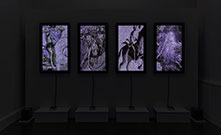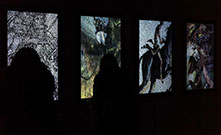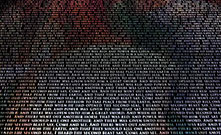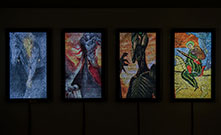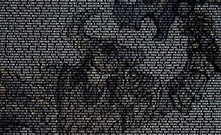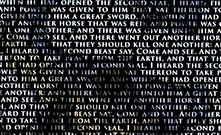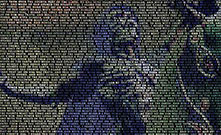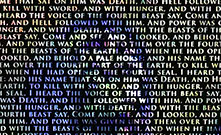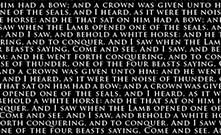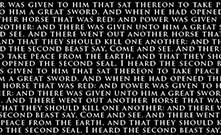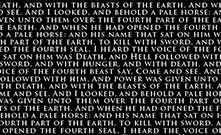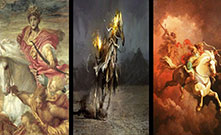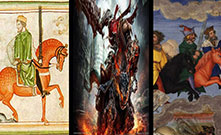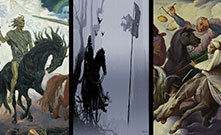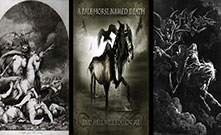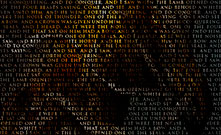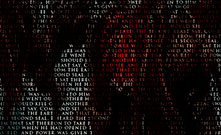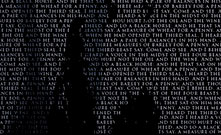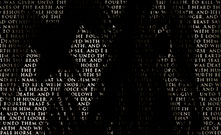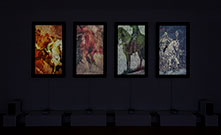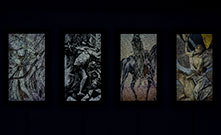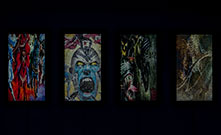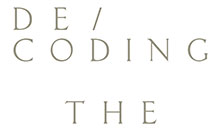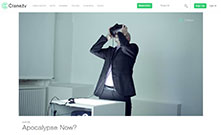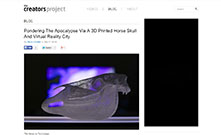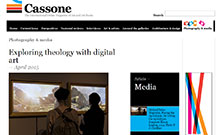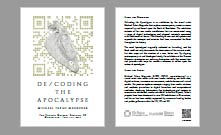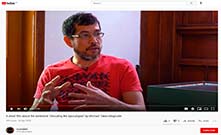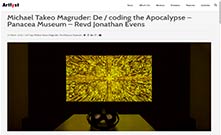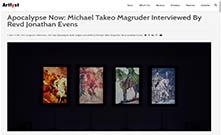Revelation as Mirror
v1.0 by: Michael Takeo Magruder, 2014
A set of digital 'stained-glass windows' that considers how the Book of Revelation is often used as a lens to contextualise the present.
Installation Documentation (v1.0):
About the Artwork:
The Book of Revelation has often been employed as a device to contextualise a present time or situation. Because of its visual nature, it has inspired endless artistic responses and functioned as a lens through which individuals and societies alike have viewed their own realities in order to gain a sense of understanding about the times in which they live.
Revelation as Mirror is a set of digital 'stained-glass windows' – one for each of the Four Horsemen of the Apocalypse – that alludes precisely to this idea of the 'lens'. Each window is composed of two discrete parts. The first 'glass' and 'lead' layer carries the Book's text itself, which filters and abstracts what lies behind it. The second, 'light' layer consists of an LED screen that carries fleeting, animated images drawn from live web searches based on keywords from the verses. The combination draws the viewer's attention upon the continuous reinterpretation, mediation and attribution of meaning of the biblical text through different ages, locations and systems of knowledge.
Digital Media Documentation:
In Dialogue with:
Dr. Natasha O’Hear [ academic 'reading' and context ]
In Collaboration with:
Erik Fleming [ Java programming ]
With Thanks to:
Prof. Ben Quash [ academic project lead ] . Alfredo Cramerotti [ curatorial project lead ] . Type Creative [ digital print production ]
Installation Documentation (v1.1):
Supported by:
Revelation as Mirror v1.0 was produced in 2014 as part of De/coding the Apocalypse – a solo exhibition exploring contemporary creative visions inspired by and based on the Book of Revelation; presented by the Cultural Institute at King’s College London in partnership with contemporary art centre MOSTYN and the Department of Theology & Religious Studies at King’s. The artwork's research phase (2012-13) was funded by the Leverhulme Trust's artist-in-residence programme.
Artwork Requirements:
[ gallery ] Set of four algorithmic 'stained-glass windows' (Adobe Flash) constructed with: digitally-printed acrylic panels; 47" led screens; micro computer systems; and 2.1 sound system.
